Saturday, May 1, 2010
As I awoke one morning from uneasy dreams, I found the crazed eyes of an old man staring into my own. Dismissing this unwelcome substitute for sweeter awakenings, I closed my eyes, dreaming first of lush green meadows, then of Meadow Fresh, then of cows, and then, naturally, of being knocked down by a stampede of cows and rickshaws in a bustling Old Delhi railway station. I woke again, with a vaguely uncomfortable sensation about my legs. Glancing up in time to see the same old man sitting on them, I returned to my dreams quite befuddled by the state of things. What I can only assume to be several minutes later, I was finally roused to full consciousness by a mighty slap in the face. In another country, the old man begged my pardon, but believed my legs to be inconveniently located. In India, he gave my face another great slap, gnashing his paan-stained teeth, shouting abuse in Hindi, and pulling me off the concrete bench on which I now realised I had been sleeping. It wasn't until I hit the equally uncomfortable concrete ground that I recalled the circumstances by which I had arrived there.
After leaving Palampur in good health and fine spirits, I had travelled by bus to Shimla, spending the night there. Next morning I caught a toy train down the mountain to Kalka, where I spent the afternoon and evening waiting for (in India, desperately trying to confirm my ticket for) my main train, which departed for Mughal Serai station, near Varanasi, at midnight. I'll leave the descriptions of Sleeper Class - of train travel in general - for another time, but after a full night and day on the train - passing Delhi's Red Fort by first light, spending hours sitting in the open doorway watching the fields and the villages and the cities go by, and seeing the sun set over Allahabad - after twenty-four hours, I arrived at my destination - or at least, an hour's rickshaw ride away.
As I was a stranger to Varanasi, and it being a strange time of night, I decided it would be a bad idea to travel the remaining distance and look for a hotel - a decision which in retrospect I'm thankful to have made, despite what it cost me in health and comfort. I spent a couple of hours looking for the station's retiring rooms, only to find all the beds full. I then settled down in the upper class waiting room, from which I was soon ejected (despite folding my legs and taking up an English novel - what has worked everywhere else in India didn't work here) owing to my low-class ticket. My next resting place at Mughal Serai was some kind of pseudo-takeaway restaurant. I fell asleep at one of the tables here at about 2:30am, and was woken by the waiter when the establishment shut its doors at 3am. Following this setback, I was exhausted enough to resign myself to a concrete bench, adjacent to Platform One. Casting my eyes over the platform: a hundred street children sleeping amid piles of rubbish; flies and mosquitoes hovering menacingly in the bright light of an approaching Kolkata train; a grey huddle of well-dressed Kolkatan businessmen standing silently, waiting for it to reach them - these were among my final impressions before sleep overtook me, several hours before dawn.
And so it was that I awoke to the slaps and the paan and the swearing as the sun rose over the Gangetic plain on the fourth day of April, allowing me to see everything in a literally new light - less melancholy, more chaotic, but no less thought-provoking. It was about 6am, and I walked outside through a thick mob of urgent-looking rickshaw drivers, itching at the mosquito bites that covered my arms and ankles while expressing my irritability with the cruder form of "get lost", which unfortunately has to be applied liberally to have any effect upon rickshaw mobs. I found the eight-seater share jeep I had been looking for, which in good time took all fifteen of us to Varanasi. It was from this jeep that, as we crossed a long, high bridge to the city, I first saw the largest and most impressive river I've ever seen in my life. The first impression was also the least tainted by sickness and fatigue, and therefore the best. The rising sun shone on the ghats (steps), which extended along the city-side of the river as far as the eerie haze allowed the eye to see. From the bridge, I could make out solitary figures washing themselves or their clothes in the holy water, kids playing cricket nearby it as orange Sadhus passed them by, while incredibly attractive boats slowly drifted along, past them all, downstream with the current. Being quite some time since the last monsoon, the river was only about a quarter its potential width - which is assuredly massive - and so the bank opposite the city was more like a desert, devoid of anything permanent. It's impossible to describe how awed I was by the distant, hazy silhouettes of horses moving about on this desert below me , how surreal it all looked. This impression, more than anything else during my stay, allowed me to get a feeling for the overwhelming history of this ancient place.
The next few days were a series of frustrations, with sickness preventing me from doing much, apart from vomiting the nights away from the roof of my hotel into the alleyways below. I ventured out occasionally though, and there are several stories which did come out of these ventures, but this blog post is already too long, and so I'll leave them for a later date. Owing both to my inactivity and to the stories, I didn't end up with many photos, and none of them do justice to the city, but I'll put the ones I do have at the bottom of this writing.
On the eighth and the ninth, I went by train from Varanasi to Darjeeling - or more importantly to my personal situation, forty-five degrees to fifteen - and thoroughly enjoyed unwinding there. For the first time in April I was psychologically prepared to shower and change my clothes, knowing that I wouldn't immediately be visibly covered by floating particles of things long dead as soon as I stepped out the door. Darjeeling isn't really the charming colonial retreat it used to be, but I still prefer it to the first hill station I mentioned, Shimla. With a brilliant bookstore and bakery, a cheap place to stay, and enough tourists to meet but not so many that it removes you from being in India, it's a good place to use as a base for other travels, which I have done throughout this month.
After spending a few initial days in Darjeeling, I packed my only bag and took a jeep to Manibhanjang, where I began a five day trek in the mountains. A foggy first day took me on a steep climb to Tumling, at about 3000m. On the way I stopped at several villages, having lunch in India before being given a cup of tea and an interesting conversation by a nice family in Nepal, several hours later. The trekking lodge that night was a decent place (they were to get progressively less decent and more expensive every subsequent night) and served the hearty Indian staple of rice, dal, and vegetables. I had the same meal every night, and it tastes as good as it sounds bad. Next day we climbed through denser fog to Sandakphu, situated at a high point on the Singalila Mountain range at about 3700m, several hundred metres higher than Mt Cook. I said "we" - on this day I was accompanied by Brian and Tara, with whom I spent a memorable night playing the card game Trump by candlelight in a trekkers' hut, while a freezing wind blew threateningly outside.
At 5am the next morning, I eagerly got out of my sleeping bag, slipped on my jandals (a fatal mistake) and ran outside in the cold, because after being shrouded in fog since I arrived in Darjeeling, the Himalaya Proper was finally - and clearly - visible. Kanchenjunge, the third-highest mountain in the world, stood nearby, towering above me as I walked towards it along the ridge that day. Everest was visible far off to the west, along with a dozen impressive peaks before it. And the third day was by far the best day of walking - I could see my destination as I walked, with rhododendrons hanging to the cliffs before it, and Kanchenjunga looming above it. I spent that night at Phalut, the next day descending 30km through a rainforest to Rimbik, and the day after finding my way to Darjeeling - to shower and change clothes.
My next destination was Sikkim, a small state which only recently became part of India. For a long time it was a Buddhist kingdom, but a massive wave of Nepali immigrants in the sixties upset the balance of power, and the monarchy was toppled - India was quick to restore order and effectively annex it, it being a crucial point on the border with hostile China. Sikkim is the state in which Kanchenjunga actually lies, though it's visible from Darjeeling, Nepal, Tibet, and China. Anyway, I began my ten days here in the capital Gangtok, which needs little consideration. It is a town like any other in India, excepting the tidy main street, which resembles a main street like any other in Europe. Pelling was my next stop - it is quite a nice small town, but there's nothing remarkable in it except amazing views of Kanchenjunga, which during my stay were spoiled by fog. I then undertook another trek, which was equally as enjoyable as the first, passing from remote village to lake to Buddhist monastery to Yuksom. Yuksom is my favourite place in India so far - in one short street of refreshingly single-storied buildings, it's at once a base camp for people climbing to Goecha-La, 5000m, and a peaceful Sikkimese village. Instead of completing the Monastic Trek, I spent the remaining time of my Sikkim permit in and around Yuksom, and am glad of it.
Now I'm in Darjeeling once again, and having already showered and changed clothes, will be beginning a long and arduous bus journey to Nepal (either Kathmandu or Pokhara) tomorrow. I'll probably spend about a month there, and will update this blog afterward. Some of this month's photos can be seen below, but believe me when I say that I've never before felt so distinctly how little justice a camera can do to things truly humbling.
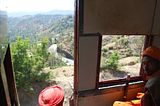
Sikh and Sadhu, Shimla Toy Train
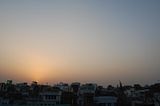
Varanasi cityscape by sunset. Picture this while playing the muezzin's call to prayer on youtube.

Long Island Hotel's resident dog, Darjeeling
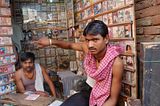
DVD stall in Varanasi
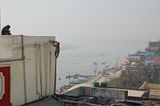
The monkeys of Varanasi eating my samosa
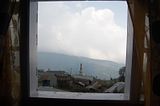
Looking out the window during lunch on day one of the Singalila Ridge trek
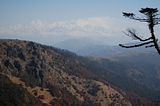
Kanchenjunga from near Sandakphu, day three - Phalut is on the distant hill in the middle

Tumling in the morning
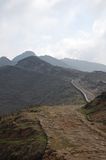
Looking back towards Manibanjhang from Tumling
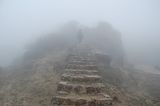
Stairway to Sandakphu, day two

Siberian Tiger, West Bengal Hills
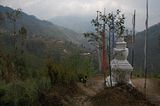
Descending to Rimbik from Phalut
More to come in a while
